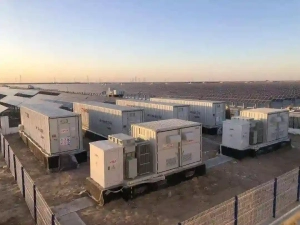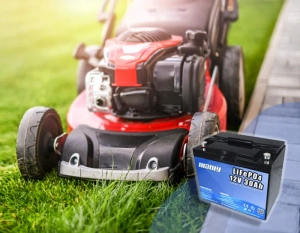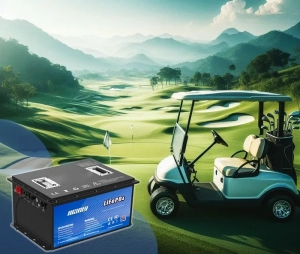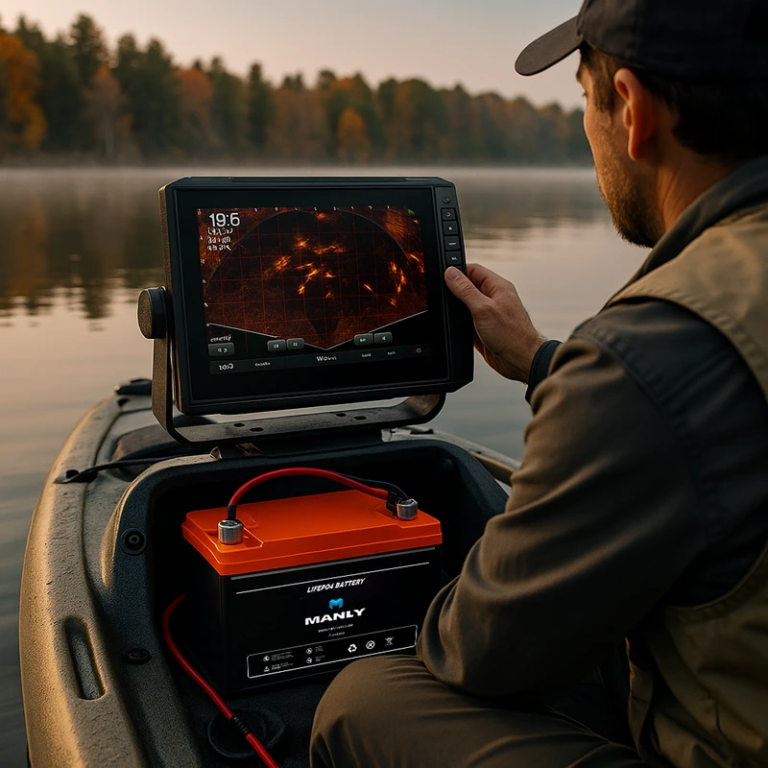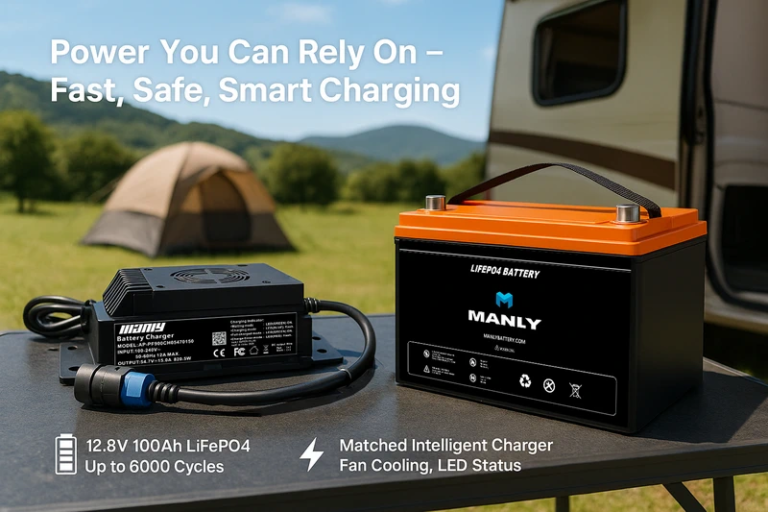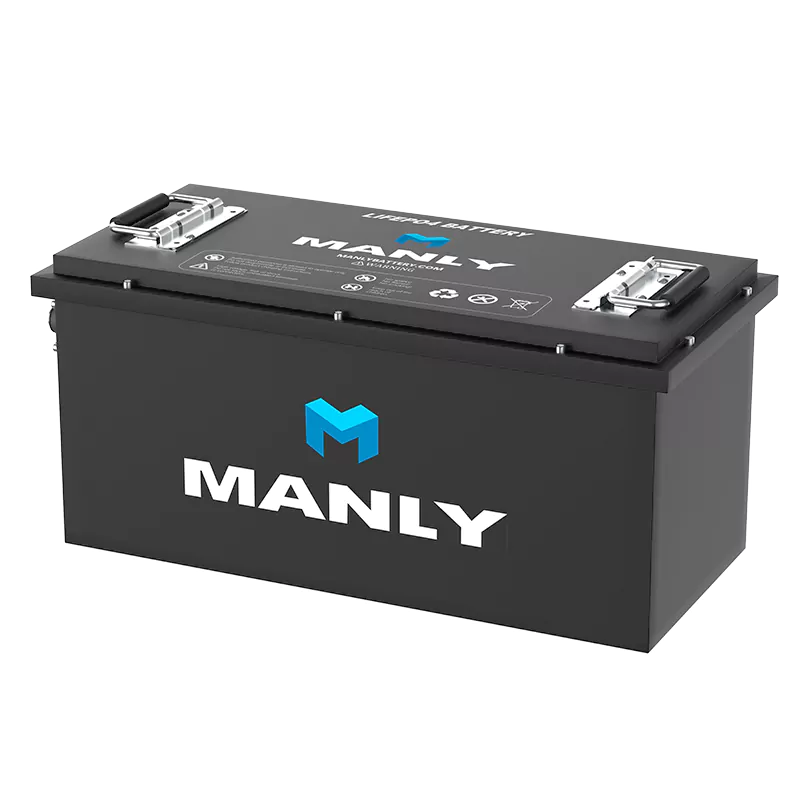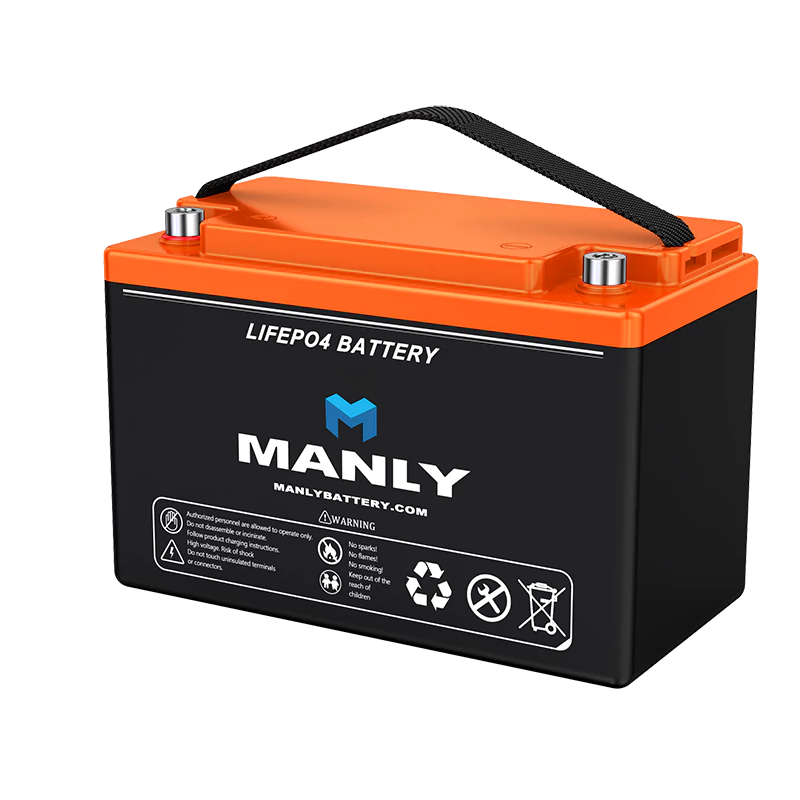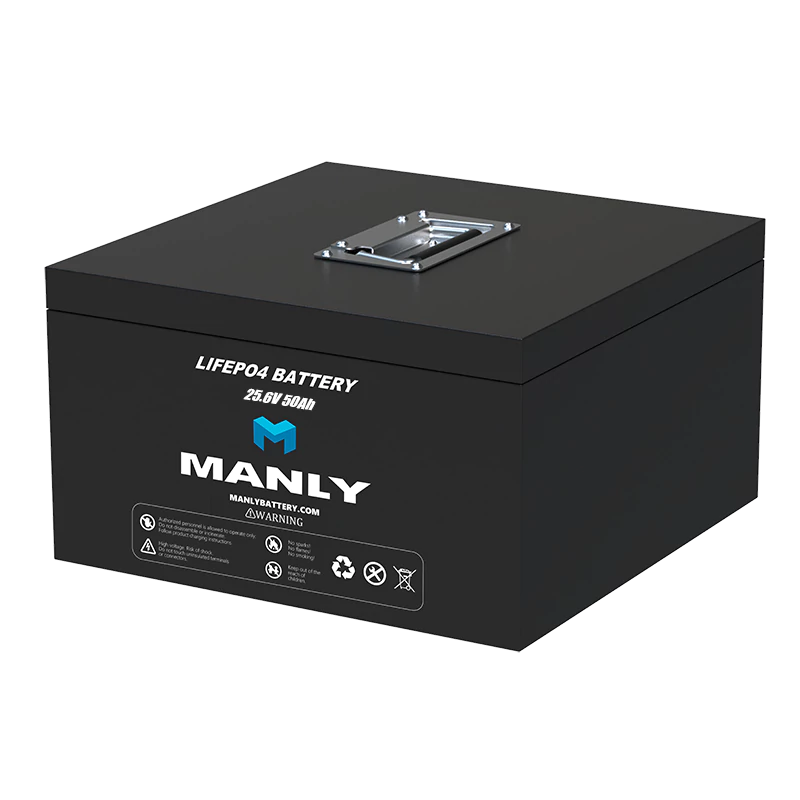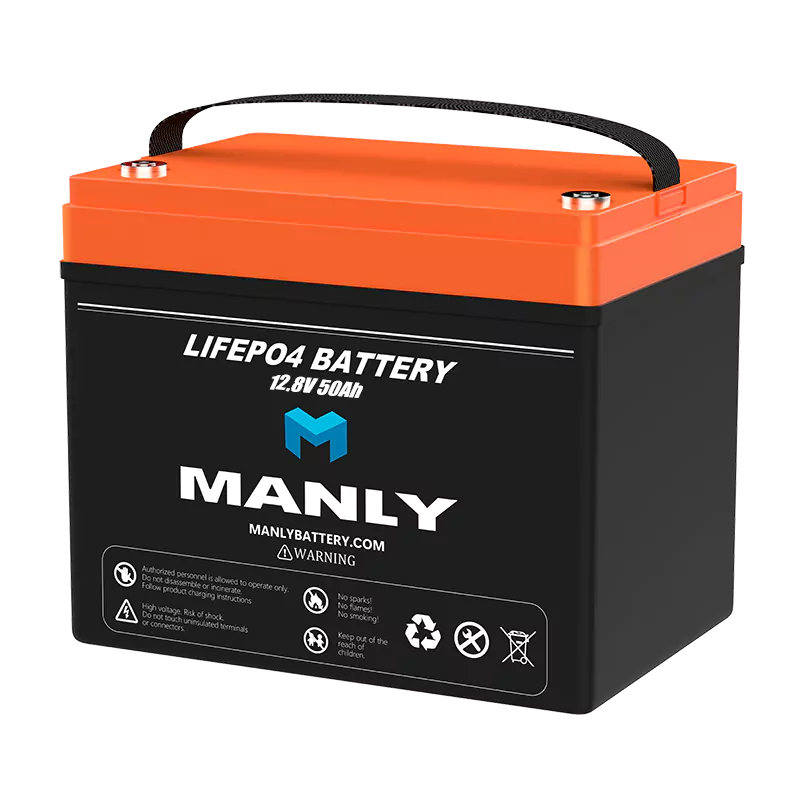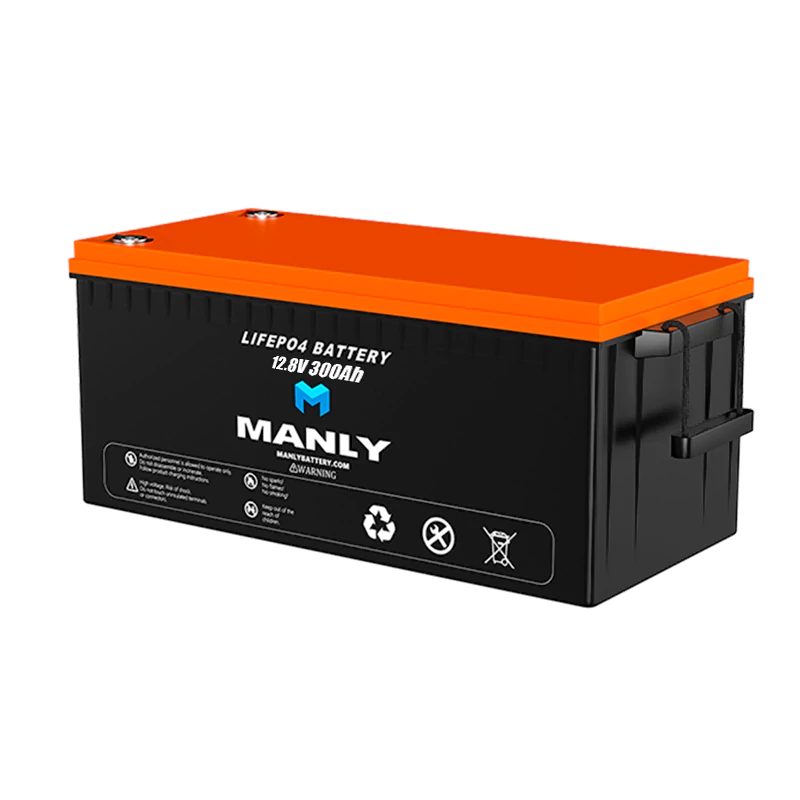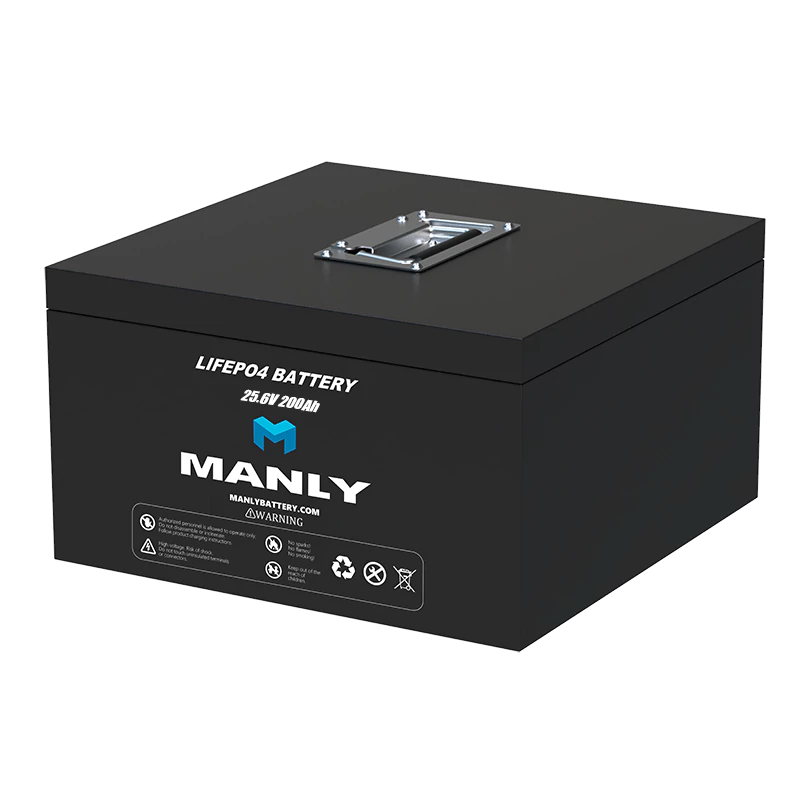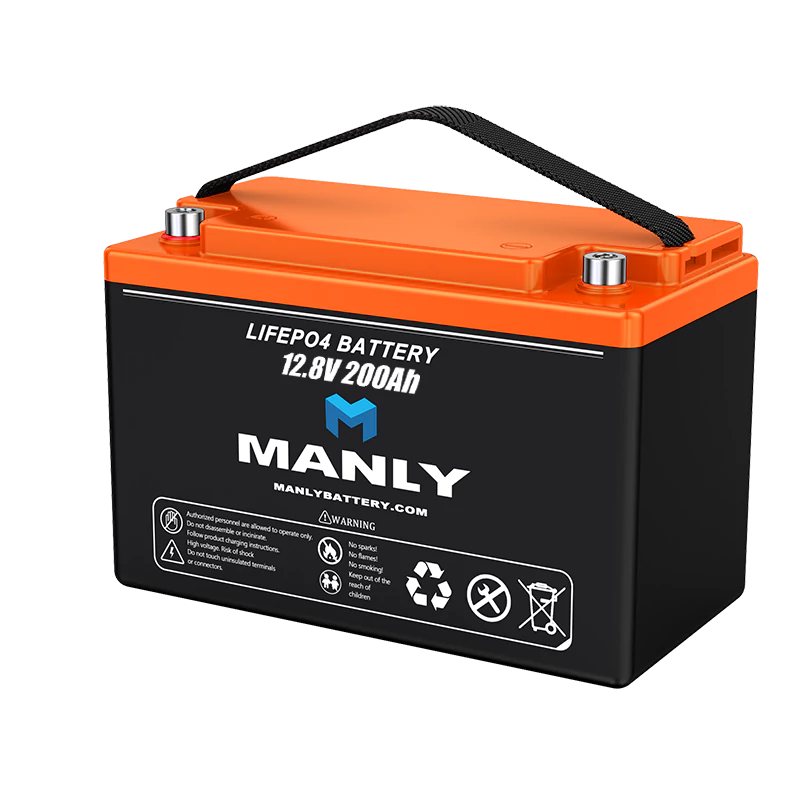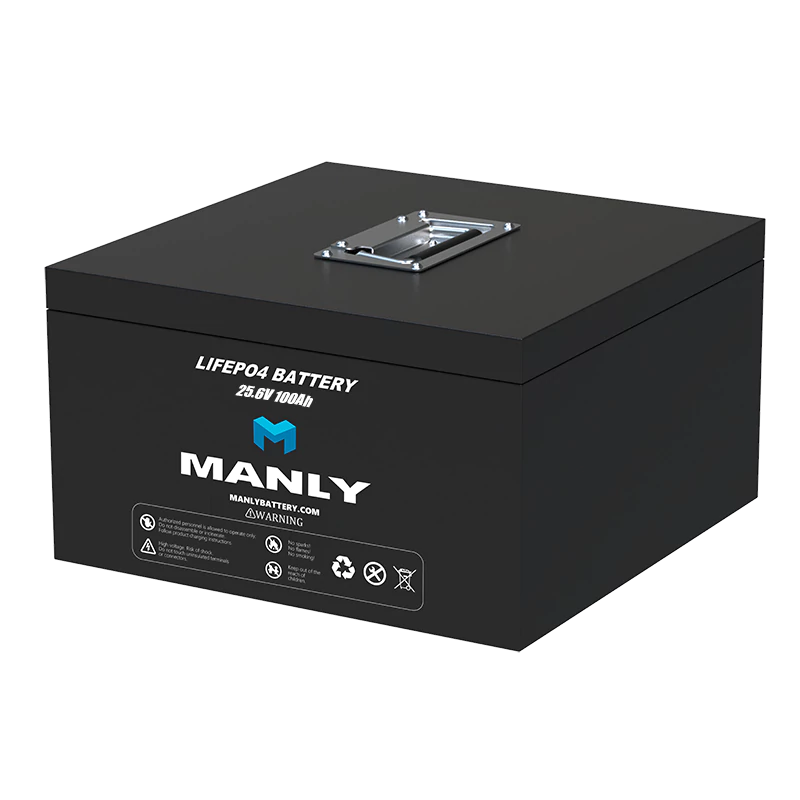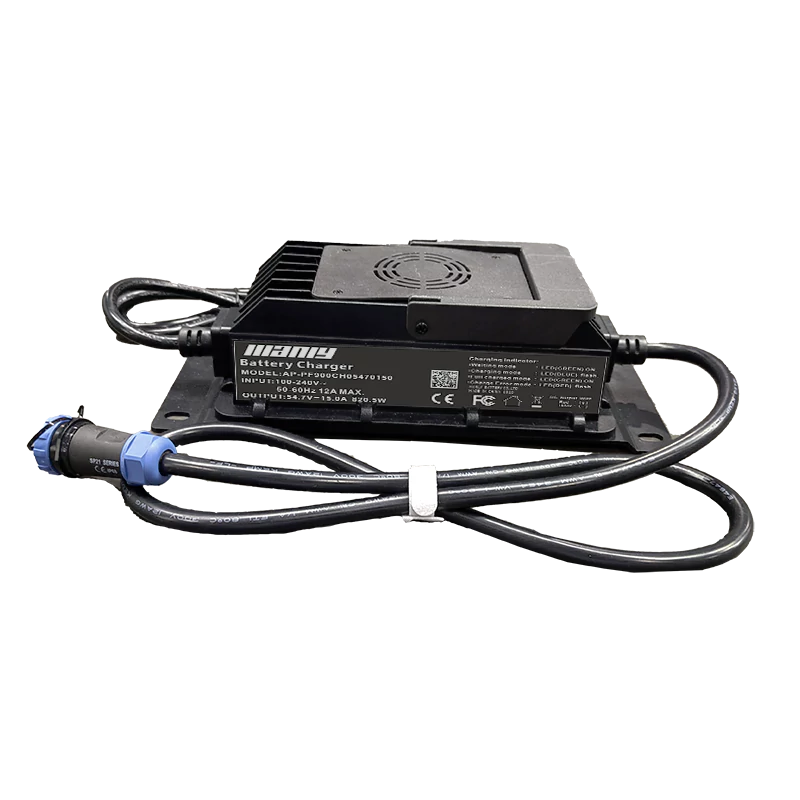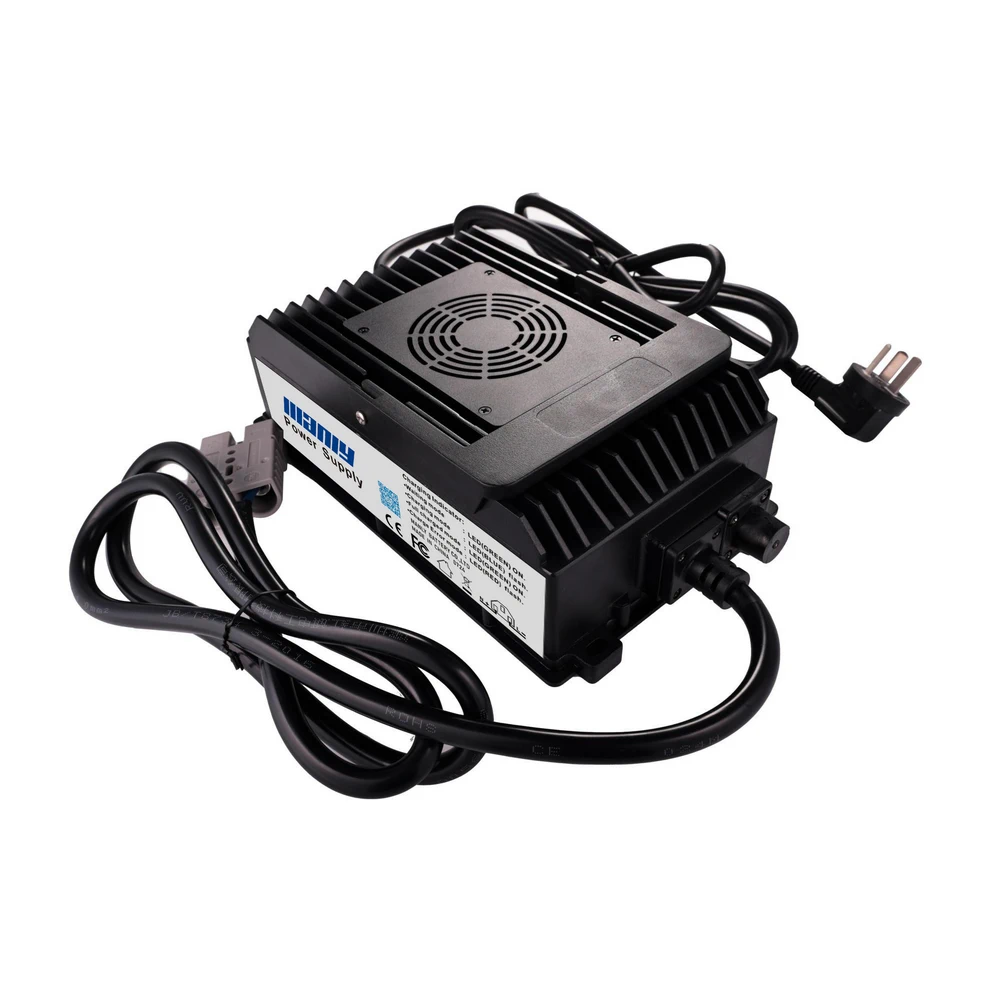Was ist der maximale Wechselrichter für die 100AH -Batterie?
Inhaltsverzeichnis
- Was ist der maximale Wechselrichter für die 100AH -Batterie?
- Wechselrichtergrößenrechner
- Grundlegendes zu Wechselrichter-Grundlagen
- Wird eine 100AH -Lithium -Batterie einen 1000 -W -Wechselrichter betreiben?
- Kann ich einen 2000 -W -Wechselrichter mit einer 100AH -Batterie betreiben?
- Installations- und Sicherheits -Tipps für einen 1000 -Watt -Wechselrichter
- Abschluss
- Erfahren Sie mehr über Batterie
Wechselrichtergrößenrechner
Wechselrichtergrößenrechner: Wie man verwendet und interpretiert
Bei der Betrachtung der Kompatibilität einer 100AH -Lithium batterie mit einem 1000 -W -Wechselrichter wird der Wechselrichtergröße ein entscheidendes Werkzeug. Es wurde so konzipiert, dass es die Anforderungen Ihres Systems genau bewertet und Ihnen hilft, die maximale Wechselrichtergröße Ihres 100AH -Akkus zu ermitteln. Dies basiert auf Ihrer Batteriespannung, Ihrer Wechselrichter -Effizienz und Ihrer Leistungsfaktor, um sicherzustellen, dass Sie Ihren Akku nicht überlasten.
Was können Sie mit diesem Tool berechnen?
Maximale Wechselrichtergröße: Geben Sie die Batteriespannung, den Wechselrichter -Effizienz, die Batteriekapazität und den Leistungsfaktor ein, und der Taschenrechner bietet Ihnen die maximale Wechselrichtergröße, die Ihre Batterie unterstützen kann. Dies stellt sicher, dass Sie einen Wechselrichter verwenden, der den Funktionen Ihrer Akku entspricht und vermeidet, ihn zu überladen.
Stellen Sie die Kompatibilität sicher: Für diejenigen, die sich nicht sicher sind, welchen Wechselrichter für seinen Setup wählen, bietet dieser vielseitige Taschenrechner eine einfache Möglichkeit, festzustellen, ob Ihr aktueller 100AH -Akku ausreicht oder einen größeren Wechselrichter benötigt. Sie können Ihren Energieverbrauch optimieren, indem Sie die Werte basierend auf Ihrem eindeutigen Akku -Setup einstellen, um sicherzustellen, dass der Taschenrechner Ihren spezifischen Anforderungen gerecht wird.
Wie es funktioniert
Batteriespannung (v): Geben Sie die Spannung Ihrer Batterie (z. B. 12 V, 24 V) ein. Der Taschenrechner verwendet dies, um die Gesamtenergie zu bestimmen, die aus Ihrer Batterie verfügbar ist.
Wechselrichter -Effizienz (%): Die Effizienzrate Ihres Wechselrichters gibt an, wie viel Energie tatsächlich für die Stromversorgung Ihrer Geräte nach Umrechnungsverlusten verwendet wird. Normalerweise sind dies etwa 80-95%. Das Eingeben sorgt für eine realistischere Berechnung.
Batteriekapazität (AH): Die Standardeinstellung ist 100AH, aber Sie können diesen Wert basierend auf Ihrer Batteriekapazität ändern. Dieser Wert gibt an, wie viel Energie Ihre Batterie speichern kann.
Leistungsfaktor: Dies ist wichtig, wenn die Wechselstromlasten berücksichtigt werden. Es erklärt, wie effizient der Wechselrichter die angeschlossenen Geräte mit Strom versorgt. Für die meisten Geräte ist ein Leistungsfaktor von 1,0 Standard.
Sobald diese Werte eingegeben wurden, bestimmt der Taschenrechner die maximale Wechselrichtergröße basierend auf der verfügbaren Energie und Effizienz. Auf diese Weise können Sie vermeiden, einen Wechselrichter auszuwählen, der die Funktionen Ihrer Akku überschreitet.
Weitere Unterstützung und detaillierte Informationen finden Sie auf unserer Website und wenden Sie sich an unseren erfahrenen Kundenservice unterMANLY Batterie Kontaktieren Sie uns.Grundlegendes zu Wechselrichter-Grundlagen
1. Erklären Sie, was ein elektrischer Wechselrichter ist und seine Funktion
Ein elektrischer Wechselrichter ist ein Gerät, das den Gleichstrom (DC) in abwechselnden Strom (AC) umwandelt. Dies ist wichtig, da viele Haushaltsgeräte und elektronische Geräte mit Wechselstrom betrieben werden. Der Zweck eines Leistungswechselrichters besteht darin, diese Geräte mit einer DC -Stromquelle wie einer Batterie oder einer Solarpanel zu verwenden. Die IT -Leiterringe verwenden eine Kombination von elektronischen Komponenten, um den Stromfluss zu ändern. Sie nehmen die DC -Leistung, normalerweise aus einer Batterie, und erzeugen sie, um Wechselstromkraft zu erzeugen. Diese Wechselstromkraft kann dann verwendet werden, um verschiedene Geräte wie Fernseher, Computer und sogar Küchengeräte auszuführen. Zu den Hauptteilen eines Wechselrichters gehören die Wechselrichterbrücke, die Steuerlogik und die Filterkreis. Wenn Sie beispielsweise eine 12 -V -Batterie haben, kann der Wechselrichter diesen 12 -V -Gleichstrom in 120 -V -Wechselstrom umwandeln, die Standardspannung für Haushaltsgeschäfte in den USA. Auf diese Weise können Sie Ihre Batterie für Stromversorgungsgeräte verwenden. Dieser Konvertierungsprozess umfasst ein Wechselstrom -Wechselrichtersystem, das mehrere Schlüsselkomponenten verwendet, einschließlich der Wechselrichterbrücke, der Steuerungslogik und der Filterkreis.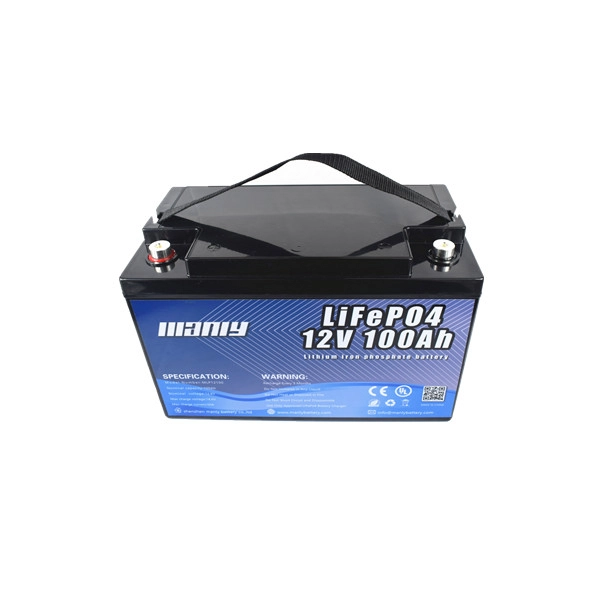
2. Kurzer Überblick über verschiedene Arten von Power -Wechselrichtern für Häuser
Es gibt mehrereWechselrichter für Privathaushalte, jeweils für verschiedene Anwendungen und Bedürfnisse. Hier sind einige gängige Typen:- Reine Sinus-Wechselrichter: Diese bieten eine glatte und konsistente Elektrizitätswelle, ähnlich wie Sie es aus dem Stromnetz erhalten. Sie sind ideal für empfindliche Elektronik wie Computer und medizinische Geräte.
- Modifizierte Sinus-Wechselrichter: Diese sind einfacher und billiger als reine Sinuswellenwechselrichter, erzeugen jedoch eine weniger glatte elektrische Welle. Sie eignen sich für weniger sensible Geräte wie Elektrowerkzeuge und Haushaltsgeräte.
- Netzgekoppelte Wechselrichter: Diese Solarstromsysteme sind so konzipiert, dass sie Strom wieder in das Netz einspeisen. Sie tragen dazu bei, Stromrechnungen zu reduzieren, indem sie den Hausbesitzern ermöglichen, tagsüber Solarzrom zu nutzen und nachts die Stromversorgung.
- Tragbare Wechselrichter: Dies sind kleine, leichte Wechselrichter, die zum Campen, in Autos oder Notfällen verwendet werden können. Sie eignen sich perfekt zum Laden kleiner Geräte wie Telefone und Laptops.
- Hybrid-Wechselrichter: Diese Wechselrichter können als eigenständige und grid-tie-Wechselrichter arbeiten. Sie sind vielseitig und können in verschiedenen Anwendungen verwendet werden, einschließlich Solarenergiesystemen.
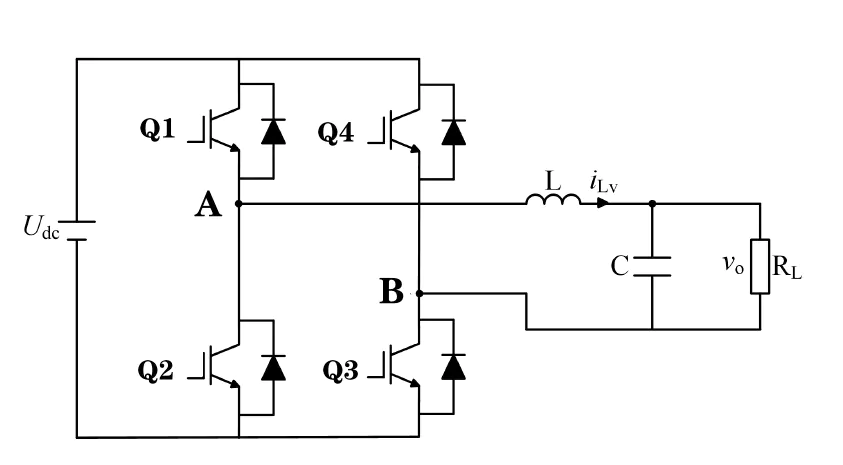 Komponenten eines WechselrichtersDie Hauptkomponenten eines Wechselrichters spielen eine entscheidende Rolle in seinem Betrieb. Dazu gehören die DC -Eingabe, die das Batterie- oder Solarpanel ist. die Wechselrichterbrücke, die den Gleichstrom auf AC umschaltet; und die Ausgabe, wo die Wechselstromleistung den Geräten geliefert wird. Die Kontrolllogik stellt sicher, dass der Wechselrichter effizient arbeitet und dieFilterschaltungGlättet die Wechselstromausgabe, um sie für alle Geräte verwendbar zu machen.Wie funktioniert ein AC-Wechselrichter?EinAC-WechselrichterUmwandle die DC-Leistung der Batterie in ein hochfrequentes Wechselstromsignal. Dieses Signal wird dann unter Verwendung eines Transformators in die gewünschte Spannung umgewandelt. Schließlich wird der Hochfrequenz-AC in einen niedrigeren Frequenz-AC umgewandelt, der dem Haushaltsnetz, normalerweise 60 Hz, in den USA entspricht. Dieser Prozess stellt sicher, dass die Ausgabe des Wechselrichters mit Standard -Haushaltsgeräten kompatibel ist.WechselrichteranwendungenWechselrichter werden in vielen Anwendungen verwendet, einschließlich Solarstromsysteme, die die Gleichstromleistung von Sonnenkollektoren für den Heimgebrauch in Wechselstrom umwandeln. Sie werden auch in Off-Grid-Systemen eingesetzt, um Strom an abgelegenen Standorten und Notstromsystemen bereitzustellen, um Backup-Strom während der Ausfälle bereitzustellen. Stromwechselrichter sind auch in Wohnmobilen und Booten Standard, um Geräte und Elektronik während der Bewegung zu versorgen. Schlussfolgerung ist ein elektrischer Wechselrichter für die Umwandlung von Gleichstrom in Wechselstrom von entscheidender Bedeutung. Viele Wechselrichter sind verfügbar, die jeweils für andere Anwendungen geeignet sind, um sicherzustellen, dass Sie den richtigen Wechselrichter für Ihre Anforderungen finden. Wenn Sie die Grundlagen für die Funktionsweise von Wechselrichtern und die verfügbaren Typen verstehen, können Sie entscheiden, wann Sie den richtigen Wechselrichter für Ihre spezifischen Anforderungen auswählen.
Komponenten eines WechselrichtersDie Hauptkomponenten eines Wechselrichters spielen eine entscheidende Rolle in seinem Betrieb. Dazu gehören die DC -Eingabe, die das Batterie- oder Solarpanel ist. die Wechselrichterbrücke, die den Gleichstrom auf AC umschaltet; und die Ausgabe, wo die Wechselstromleistung den Geräten geliefert wird. Die Kontrolllogik stellt sicher, dass der Wechselrichter effizient arbeitet und dieFilterschaltungGlättet die Wechselstromausgabe, um sie für alle Geräte verwendbar zu machen.Wie funktioniert ein AC-Wechselrichter?EinAC-WechselrichterUmwandle die DC-Leistung der Batterie in ein hochfrequentes Wechselstromsignal. Dieses Signal wird dann unter Verwendung eines Transformators in die gewünschte Spannung umgewandelt. Schließlich wird der Hochfrequenz-AC in einen niedrigeren Frequenz-AC umgewandelt, der dem Haushaltsnetz, normalerweise 60 Hz, in den USA entspricht. Dieser Prozess stellt sicher, dass die Ausgabe des Wechselrichters mit Standard -Haushaltsgeräten kompatibel ist.WechselrichteranwendungenWechselrichter werden in vielen Anwendungen verwendet, einschließlich Solarstromsysteme, die die Gleichstromleistung von Sonnenkollektoren für den Heimgebrauch in Wechselstrom umwandeln. Sie werden auch in Off-Grid-Systemen eingesetzt, um Strom an abgelegenen Standorten und Notstromsystemen bereitzustellen, um Backup-Strom während der Ausfälle bereitzustellen. Stromwechselrichter sind auch in Wohnmobilen und Booten Standard, um Geräte und Elektronik während der Bewegung zu versorgen. Schlussfolgerung ist ein elektrischer Wechselrichter für die Umwandlung von Gleichstrom in Wechselstrom von entscheidender Bedeutung. Viele Wechselrichter sind verfügbar, die jeweils für andere Anwendungen geeignet sind, um sicherzustellen, dass Sie den richtigen Wechselrichter für Ihre Anforderungen finden. Wenn Sie die Grundlagen für die Funktionsweise von Wechselrichtern und die verfügbaren Typen verstehen, können Sie entscheiden, wann Sie den richtigen Wechselrichter für Ihre spezifischen Anforderungen auswählen.Wird eine 100AH -Lithium -Batterie einen 1000 -W -Wechselrichter betreiben?
Wenn Sie verstehen, ob ein 100AH -Lithium -Akku einen 1000 -Watt -Wechselrichter ausführen kann, muss die Kompatibilität und die praktischen Szenarien untersucht werden, in denen dieses Setup angemessen ist.1. Kompatibilität einer 100ah Lithium batterie mit einem 1000 -Watt -Wechselrichter
Um festzustellen, ob eine 100AH -Lithium batterie einen 1000 -Watt -Wechselrichter mit Strom versorgen kann, müssen wir die Beziehung zwischen Kapazität, Spannung und Leistungsbedarf der Batterie verstehen. Eine 100AH-Lithium-Batterie bietet 100 Ampertenstunden Strom. Wenn die Batteriespannung 12 V beträgt, beträgt die Gesamtenergiekapazität:12V.×100EINh=1200WhEINEin 1000-Watt-Wechselrichter benötigt 1000Watts Strom pro Stunde. Um herauszufinden, wie lange die Batterie den Wechselrichter mit Strom versorgen kann, teilen wir die Gesamtenergie der Batterie durch den Strombedarf des Wechselrichters:1200Wh÷1000W.=1.2Std.Diese theoretische Berechnung zeigt, dass der Akku den Wechselrichter etwa 1,2 Stunden lang ausführen kann, dies ist jedoch unter idealen Bedingungen. Faktoren wie Wechselrichter-Effizienz und Batterie-Entladungsraten können diese Dauer in realen Szenarien beeinflussen. Die Effizienz des Stadiums liegt in der Regel zwischen 70% und 90%. Wenn wir eine Effizienz von 80% annehmen, wäre die tatsächliche nutzbare Energie der Batterie:1200Wh×0.8=960WhDie praktische Laufzeit wäre also:960Wh÷1000W.=0.96Std.Mit einem 80% effizienten Wechselrichter kann eine 100AH -Lithium -Batterie einen Wechselrichter von 1000 Watt für ungefähr 0,96 Stunden oder knapp 1 Stunde betreiben.2. Beispiele und Szenarien
Schauen wir uns einige praktische Beispiele an, bei denen dieses Setup effektiv verwendet werden kann:- Camping oder Outdoor-Aktivitäten: Wenn Sie den Akku anleuchten, kleine Küchengeräte oder Ladegeräte, ist die kurze Zeit möglicherweise ausreichend. Zum Beispiel kann ein 1000 -W -elektrischer Grill oder eine Kaffeemaschine für kurze Zeiträume ziemlich bequem sein.
- Notstrom: In einem Stromausfall kann eine 100AH -Lithium batterie, die mit einem 1000 -Watt -Wechselrichter angeschlossen ist, essentielle Geräte am Laufen halten. Sie können ein paar Lichter mit Strom versorgen, Telefone aufladen oder sogar kurz einen kleinen Kühlschrank betreiben.
- LED Lichter: 100W
- Laptop: 50W
- Handyladegerät: 10W
Kann ich einen 2000 -W -Wechselrichter mit einer 100AH -Batterie betreiben?
1. Untersuchen Sie die Machbarkeit der Verwendung eines 2000 -W -Wechselrichters mit einer 100AH -Lithium batterie
Wir müssen zuerst die Strombedürfnisse und die Fähigkeit untersuchen, um zu verstehen, ob eine 100AH -Lithium batterie einen 2000 -W -Wechselrichter mit Strom versorgen kann. Eine 100AH -Lithium batterie bei 12 V bietet:12V.×100EINh=1200WhEin 2000 -W -Wechselrichter erfordert 2000 Watt pro Stunde. Um herauszufinden, wie lange die Batterie den Wechselrichter ausführen kann, teilen wir die Gesamtenergie der Batterie durch den Strombedarf des Wechselrichters:1200Wh÷2000W.=0.6Std.Diese theoretische Berechnung zeigt, dass der Akku den Wechselrichter für etwa 0,6 Stunden oder ungefähr 36 Minuten ausführen kann. Dies ist jedoch unter idealen Bedingungen. Faktoren mit realer Welt wie Wechselrichter-Effizienz und Batterie-Entladungsraten wirken sich auf diese Dauer aus. Die Effizienz der Steigerung liegt in der Regel zwischen 70% und 90%. Unter der Annahme einer Effizienz von 80%wäre die tatsächliche nutzbare Energie der Batterie:1200Wh×0.8=960WhDie praktische Laufzeit wäre also:960Wh÷2000W.=0.48Std.Mit einem 80% effizienten Wechselrichter kann eine 100AH -Lithium batterie einen 2000 -W -Wechselrichter für ungefähr 0,48 Stunden oder knapp 30 Minuten betreiben.2. Heben Sie die Einschränkungen und Überlegungen für dieses Setup hervor
Während eine 100AH-Lithium batterie einen Wechselrichter von 2000 W technisch mit Strom versorgen kann, ist die Dauer begrenzt, was sie für den kontinuierlichen oder langfristigen Gebrauch unpraktisch macht. Hier sind einige wichtige Überlegungen und Einschränkungen:- Batteriebelastung: Ein 2000 -W -Wechselrichter belastet eine 100AH -Batterie erheblich und verringert möglicherweise die Lebensdauer. Hochleistungsbedingte Anforderungen können dazu führen, dass die Batterie schneller erwärmt und sich verschlechtert.
- Effizienzverluste: Wechselrichter haben Effizienzverluste. Niederfrequente Wechselrichter verbrauchen typischerweise zwischen 50 und 100 W statische Leistung. Auch ohne Last kann ein niederfrequenter Wechselrichter die Batterie schnell abtropfen lassen. Zum Beispiel würde der Wechselrichter beispielsweise bei einem statischen Verbrauch von 75 W allein 0,075WH pro Stunde verbrauchen. Über 10 Stunden könnte dies einen erheblichen Teil der Kapazität der Batterie erschöpfen.
- Hochfrequenz-Wechselrichter: Hochfrequenz reine Sinuswellenwechselrichter sind effizienter und statischer Stromverbrauch um 8w. Dies macht sie besser für kleine Off-Grid-Systeme geeignet. Mit einem hochfrequenten Wechselrichter könnte der gleiche 100AH-Akku allein bei statischer Last bis zu 100 Stunden dauern. Bei höherer Effizienz (bis zu 94%) ist der Batterieverbrauch während des Betriebs viel niedriger.
- Leistungsanforderungen: Ein 2000 -W -Wechselrichter mit voller Kapazität würde mehr Strom verbrauchen, als eine 100 -jährige Lithium batterie einen nachhaltigen Zeitraum liefern kann. Eine Batterie mit größerer Kapazität wie eine 200AH -Batterie wäre für den kontinuierlichen Gebrauch besser geeignet.
Praxisbeispiel
Betrachten Sie ein Szenario, in dem Sie mehrere Geräte mit Strom versorgen müssen. Zum Beispiel:- Kühlschrank: 150W
- Laptop: 50W
- LED Leuchten: 30W
- Handyladegerät: 10W
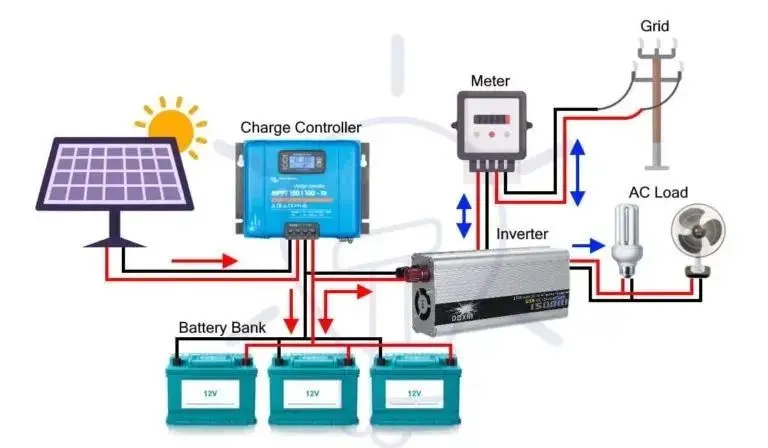
Installations- und Sicherheits -Tipps für einen 1000 -Watt -Wechselrichter
1. Schritt-für-Schritt-Anleitung zum Installieren eines 1000-Watt-Wechselrichters
Installieren a1000-Watt-Wechselrichterbeinhaltet mehrere wichtige Schritte, um einen sicheren und effizienten Betrieb zu gewährleisten. Befolgen Sie diese Anleitung für einen reibungslosen Installationsprozess:- Überprüfung vor der Installation: Überprüfen Sie vor dem Start den Wechselrichter auf Schäden, die möglicherweise während des Versands aufgetreten sind. Dies stellt sicher, dass Sie mit einer voll funktionsfähigen Einheit beginnen.
- Wählen Sie einen geeigneten Standort: Wählen Sie eine Installationsstelle weg von direktem Sonnenlicht, Wärmequellen und Feuchtigkeit. Die Lage sollte gut belüftet sein, um den Wechselrichter kühl zu halten. Vermeiden Sie es, es in der Nähe anderer elektronischer Geräte zu platzieren, um Störungen zu verhindern. Stellen Sie sicher, dass der Standort das Gewicht des Wechselrichters unterstützen und genügend Platz für die Belüftung und Wartung ermöglichen kann.
- Elektrische Sicherheitsmaßnahmen: Decken Sie die Sonnenkollektoren mit undurchsichtigem Material ab, bevor Sie elektrische Verbindungen herstellen oder den DC -Leistungsschalter trennen. Dies verhindert, dass gefährliche Spannungen während der Installation erzeugt werden.
- Montieren Sie den Wechselrichter: Befestigen Sie den Wechselrichter auf einer stabilen Oberfläche, wie z. B. einer Wand oder einem stabilen Regal. Stellen Sie sicher, dass es ein paar Zentimeter über dem Boden liegt, um es vor potenziellen Wasserschäden zu schützen. Verwenden Sie eine entsprechende Montage -Hardware, um sicherzustellen, dass sie sicher beigefügt ist.
- Schließen Sie die Batterie an: Positionieren Sie die Batterie in der Nähe des Wechselrichters, um den Spannungsabfall zu minimieren. Verwenden Sie Kabel mit geeigneten Messgeräten und Schalldämmung. Schließen Sie das positive Anschluss der Batterie mit dem positiven Eingang des Wechselrichters und dem negativen Anschluss an den negativen Eingang an.
- Schließen Sie die Sonnenkollektoren an (falls zutreffend): Wenn Sie Sonnenkollektoren verwenden, verbinden Sie sie nach den Anweisungen des Herstellers mit dem Wechselrichter. Stellen Sie sicher, dass alle Verbindungen eng und sicher sind.
- Erden Sie den Wechselrichter: Die richtige Erdung ist für die Sicherheit von wesentlicher Bedeutung. Verwenden Sie einen Erdungsdraht, um das Erdungsanschluss des Wechselrichters an einen geeigneten Erdungspunkt zu verbinden.
- Letzte Kontrollen: Bevor Sie einschalten, überprüfen Sie alle Verbindungen. Bitte stellen Sie sicher, dass die Drähte korrekt und sicher angeschlossen sind, um Kurzschlüsse oder andere elektrische Probleme zu verhindern.
2. Sicherheitsmaßnahmen, einschließlich der richtigen Verkabelung und Vermeidung von Überlastungen
Gewährleistung der Sicherheit während und nach der Installation Ihrer1000-Watt-Wechselrichterist entscheidend. Hier sind einige wesentliche Sicherheitsmaßnahmen:- Professionelle Installation: Obwohl es möglich ist, selbst einen Wechselrichter zu installieren, ist es ratsam, einen Fachmann mit Erfahrung in Wechselrichterinstallationen einzustellen. Dies minimiert Risiken und stellt sicher, dass die Installation alle Sicherheitsstandards entspricht.
- Verwenden Sie isolierte Kabel: Verwenden Sie Standard -isolierte Drähte, um Kurzschlüsse und mögliche Brandgefahren zu verhindern. Die Kabel sollten von der richtigen Anzeige sein, um die Stromlast zu verarbeiten.
- Routinewartung: Führen Sie regelmäßig Überprüfungen auf dem Wechselrichter und der Batterie durch. Überprüfen Sie den Wasserstand der Batterie alle drei Monate und schmieren Sie die Klemmen, um Rost zu vermeiden. Reinigen Sie den Wechselrichter regelmäßig und überprüfen Sie den Kühlventilator, um sicherzustellen, dass er korrekt funktioniert.
- Vermeiden Sie Überlastung: Schließen Sie keine Hochlastgeräte wie Kühlschränke oder Motoren mit dem Wechselrichter an. Überlastung kann den Wechselrichter beschädigen und möglicherweise Stromausfälle verursachen. Überprüfen Sie immer die Leistungsspezifikationen von Geräten, bevor Sie sie mit dem Wechselrichter verbinden.
- Überwachen Sie den statischen Stromverbrauch: Achten Sie auf den statischen Stromverbrauch des Wechselrichters. Beispielsweise verbraucht ein niederfrequenter Wechselrichter im Leerlauf normalerweise zwischen 50 und 100 W, während ein hochfrequenter Sinuswechselrichter um 8ws verbraucht. Dieses Wissen hilft, die Akkulaufzeit effektiver zu verwalten.
- Befolgen Sie die Herstellerrichtlinien: Lesen Sie alle Anweisungen im Wechselrichterhandbuch. Dies hilft, die Garantie des Wechselrichters aufrechtzuerhalten und stellt sicher, dass er sicher und effizient funktioniert.
- Richtige Belüftung: Stellen Sie sicher, dass der Standort des Wechselrichters gut belüftet ist, um eine Überhitzung zu verhindern. Hohe Temperaturen können die Effizienz und Lebensdauer des Wechselrichters verringern.
- Notfallvorkehrungen: Halten Sie Ersatzsicherungen griffbereit. Durch Ersatz zur Hand kann die Ausfallzeit im Falle eines Sicherungsblasens reduzieren. Trennen Sie den Wechselrichter immer von der Stromquelle, bevor Sie Sicherungen ersetzen.
- Regelmäßige Inspektionen: Überprüfen Sie regelmäßig alle Verbindungen und Klemmen auf Anzeichen von Verschleiß oder Schäden. Ersetzen Sie alle beschädigten Drähte sofort, um einen sicheren und effizienten Betrieb aufrechtzuerhalten.


